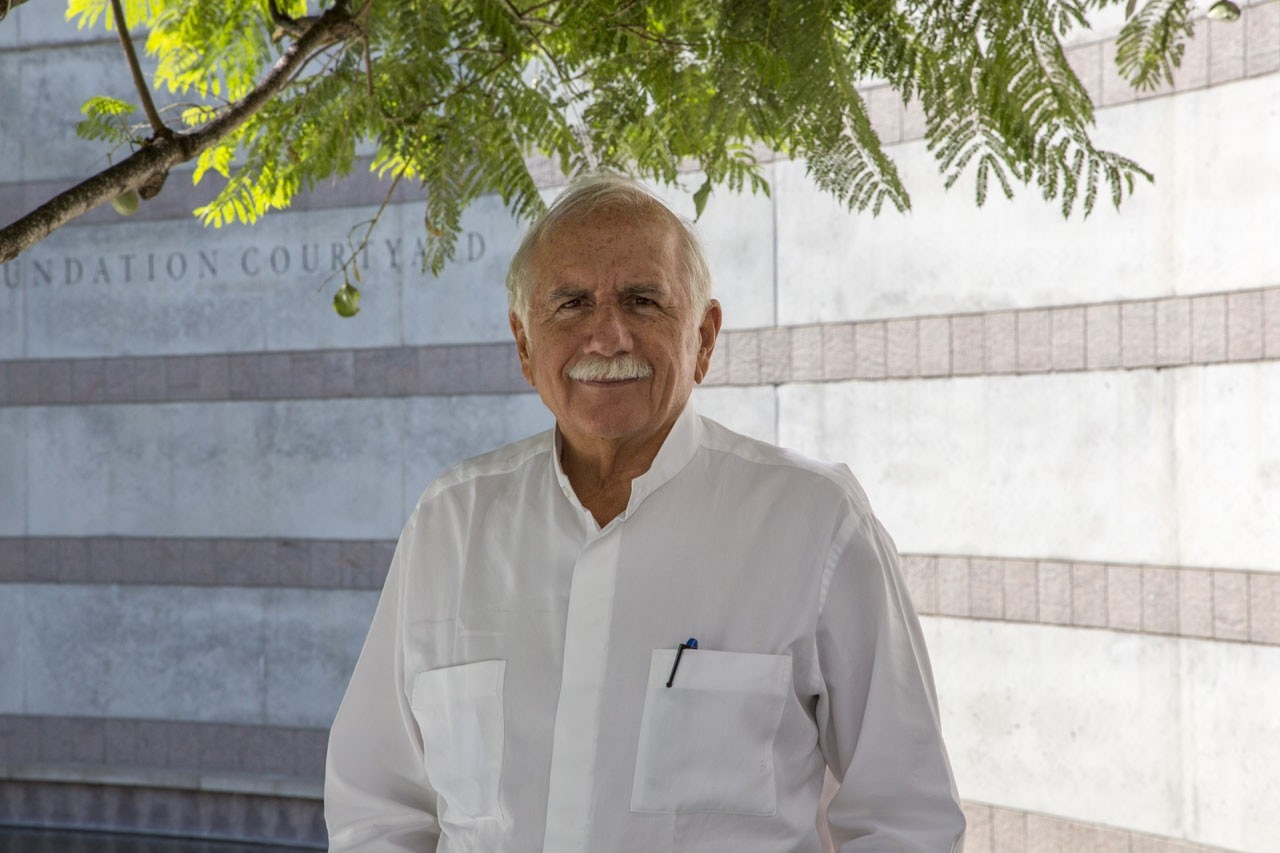
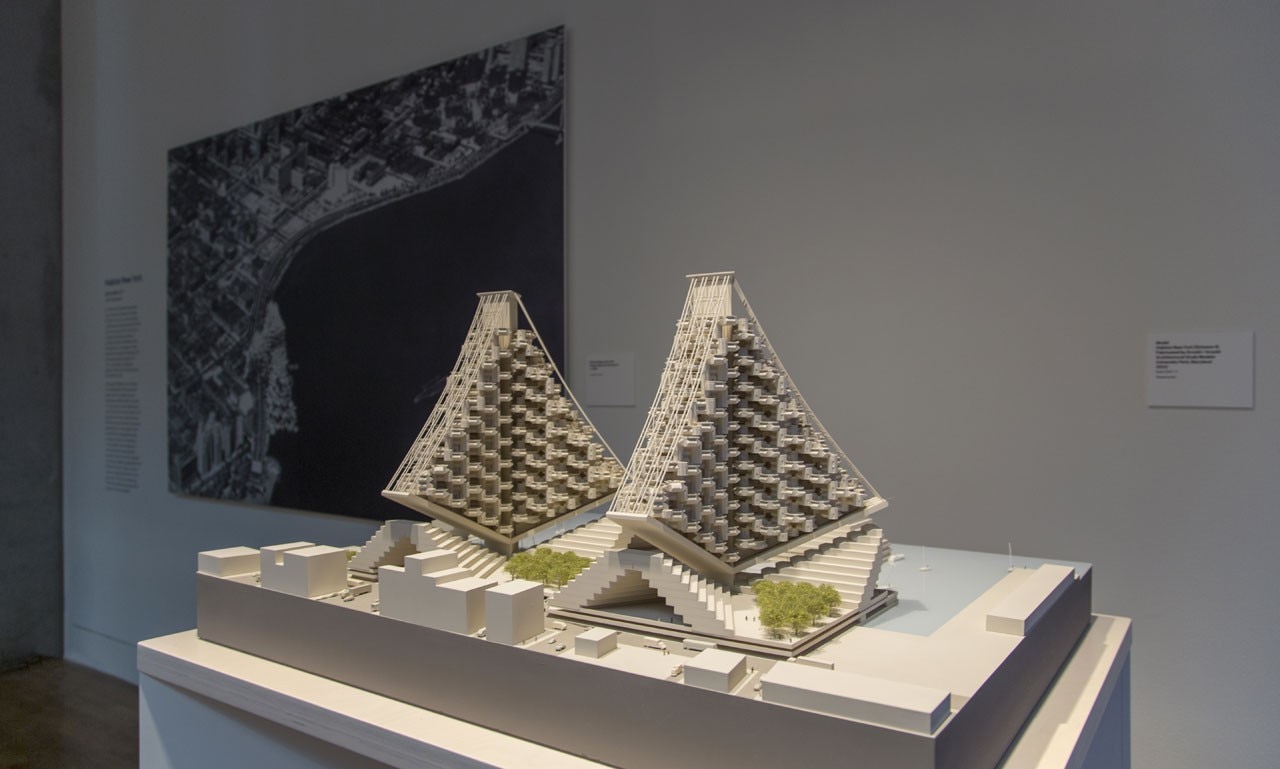
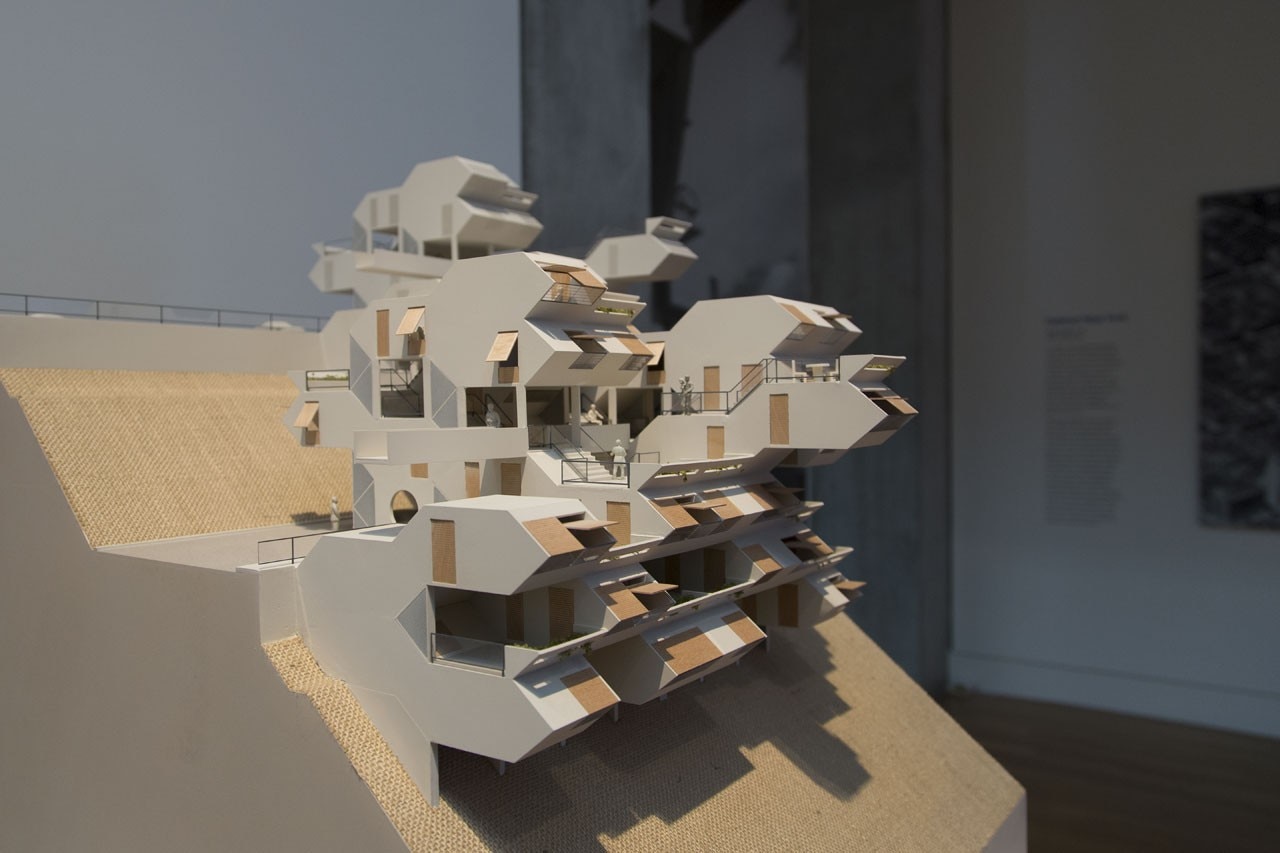
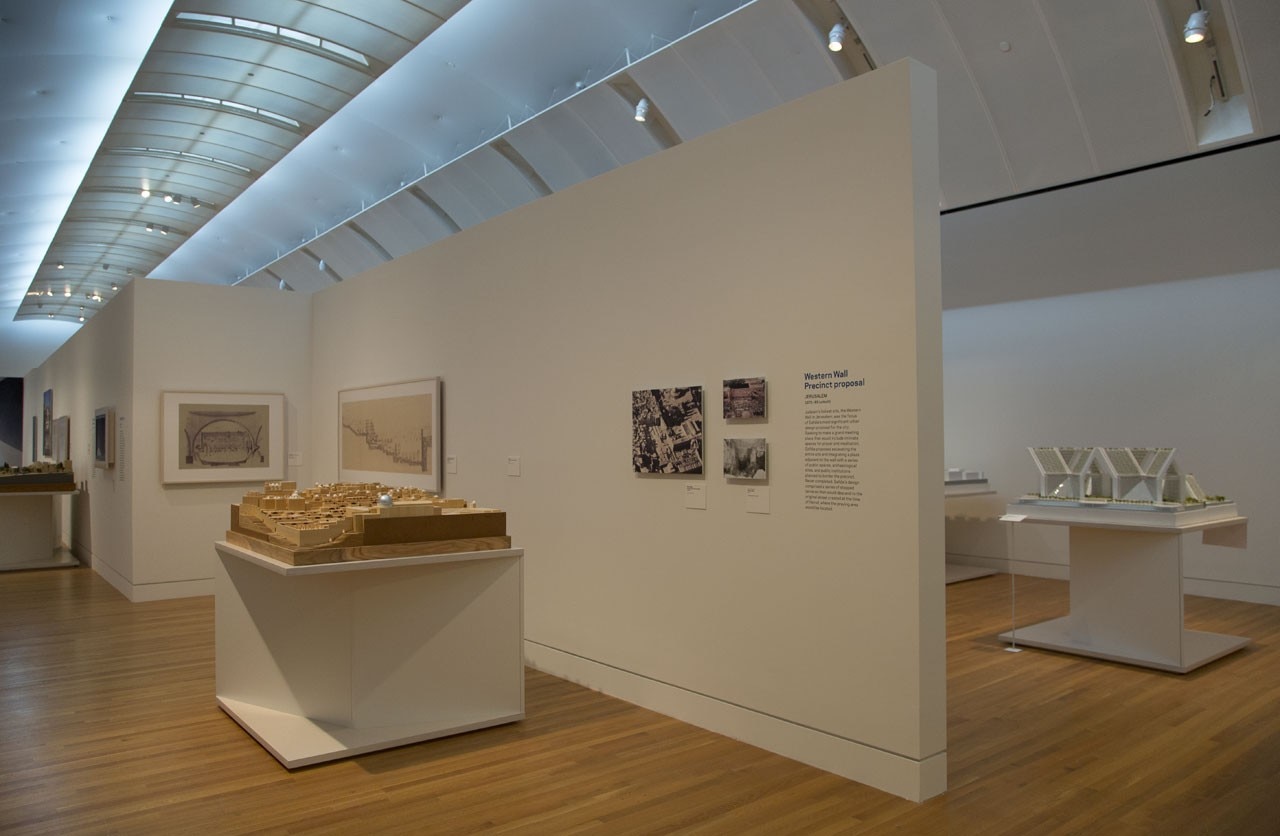
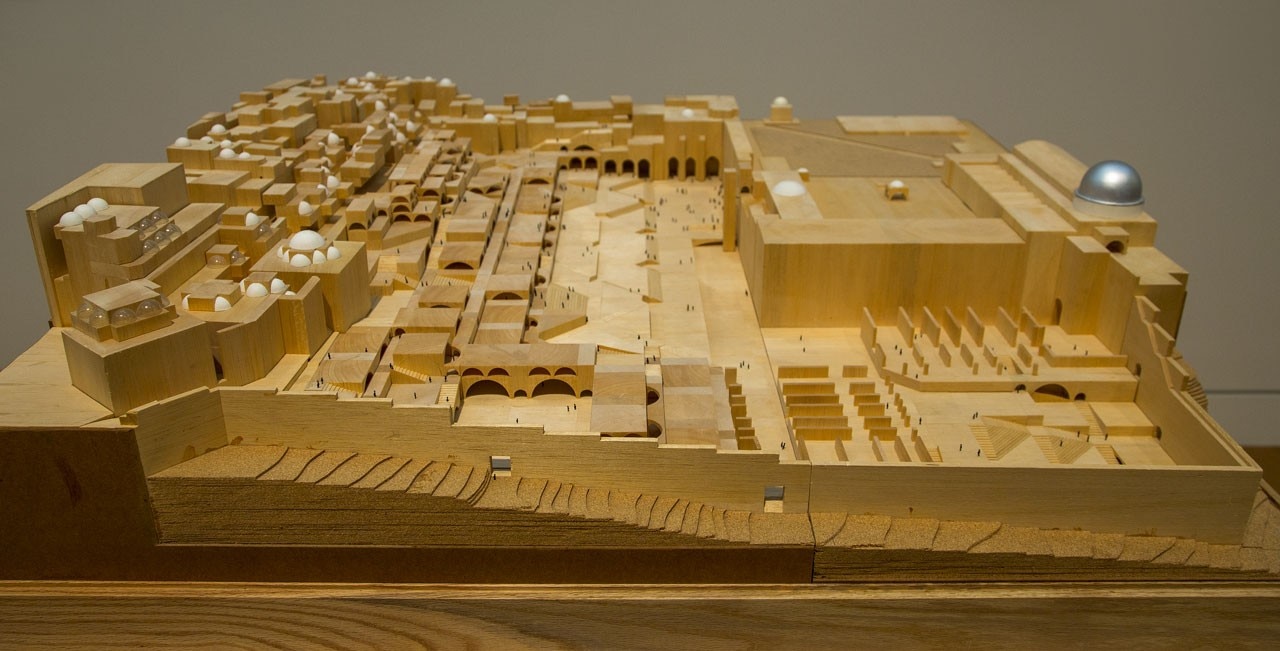
Several days before “Global Citizen” opens to the public, while finishing touches are still being banged out in the exhibition halls, Safdie sits down with me in the Skirball library and speaks eloquently about the dramas built into architecture, as well as the ones conveyed in shows about architecture. He tells me his reaction to being an architect “best-known-for…”, but perhaps most importantly, he defends his contested position that an architect, when reduced to a single word, should be a “chameleon.”
Domus: A show like this breaks the hierarchy between built and unbuilt work: both are displayed with equal importance. Is it possible to break this hierarchy in your actual practice?
Moshe Safdie: You can only really experience a built project: they’re the ones worth learning from as environments, because we know what they’re actually like. You and me, we’re sitting here in the Skirball, so we understand what it’s like to be here. Maybe we wouldn’t just from looking at a model that was never realised.
But, recently, somebody said to me: “There are iconic projects and then there are seminal projects.“ I like this. Iconic is one thing, but a seminal project makes a difference in terms of its evolution. There are many unbuilt projects that are seminal. For me, personally, they include my Centre Pompidou design, which was a critical moment, that idea. I lost the competition for The Supreme Court of Israel, but it remains a very important design for me. And one of the last designs shown in this exhibition at Skirball is the National Museum of China.
I worked on that project for a whole year. In the end, we lost it. Jean Nouvel is going to build it. I think Gehry and Zaha Hadid were as disappointed as I not to get this project. Still, it was an extraordinary experience. In that sense, sometimes unbuilt work still has very big weight in an architect’s eye. Even if a project isn’t realized, it doesn’t mean its ideas always remain unbuilt.
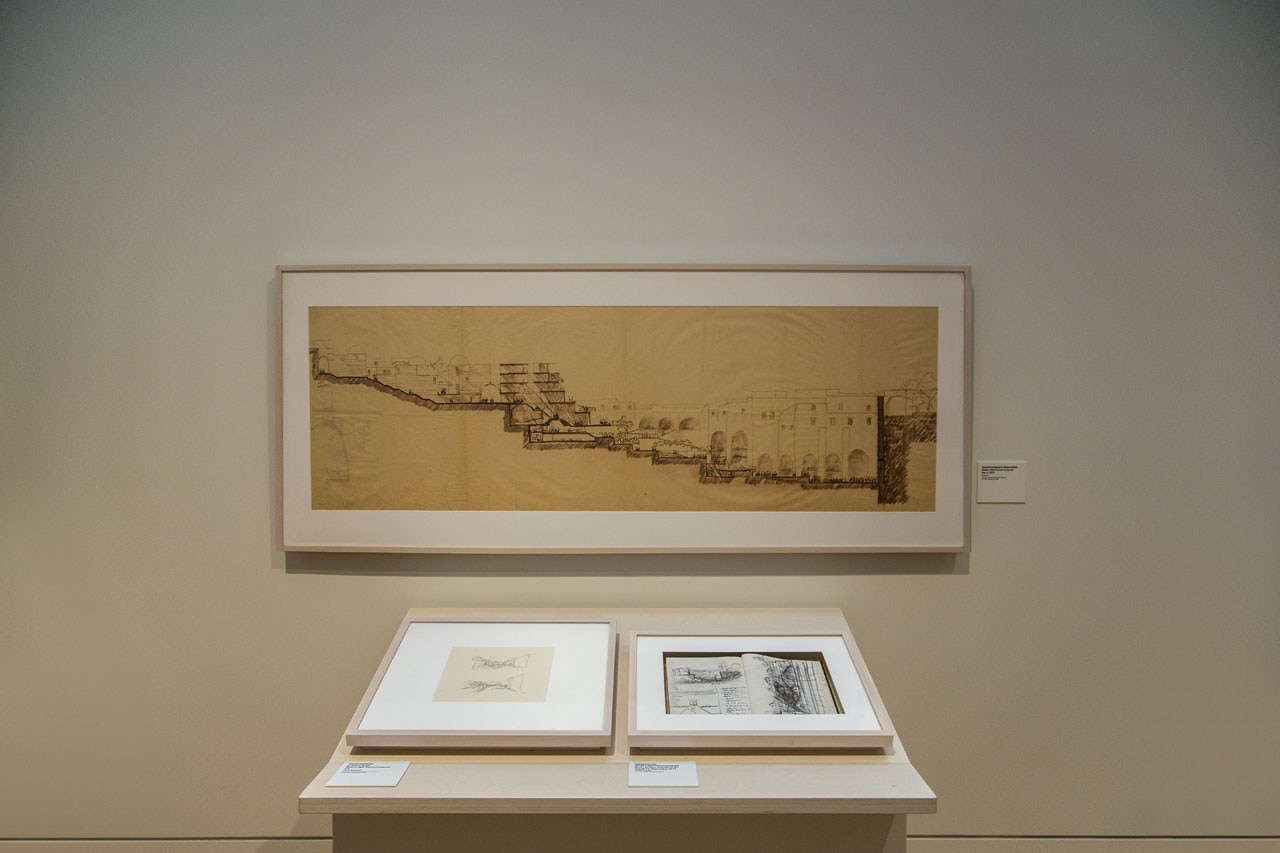
Domus: The final exclamation point of this exhibition is an unbuilt work: your rethinking of a modern-day Habitat…
Moshe Safdie: But that’s what I mean, those “unrealized” ideas seep into real work. We’re building two projects now in Asia, which are very much informed by “unbuilt” ideas. I know there are architects whose works are largely theoretical and remain just that. But in my case, I think I build a lot — maybe too much. [Laughs.] At the same time, I don’t build everything. I have a major unbuilt repertoire, as well.
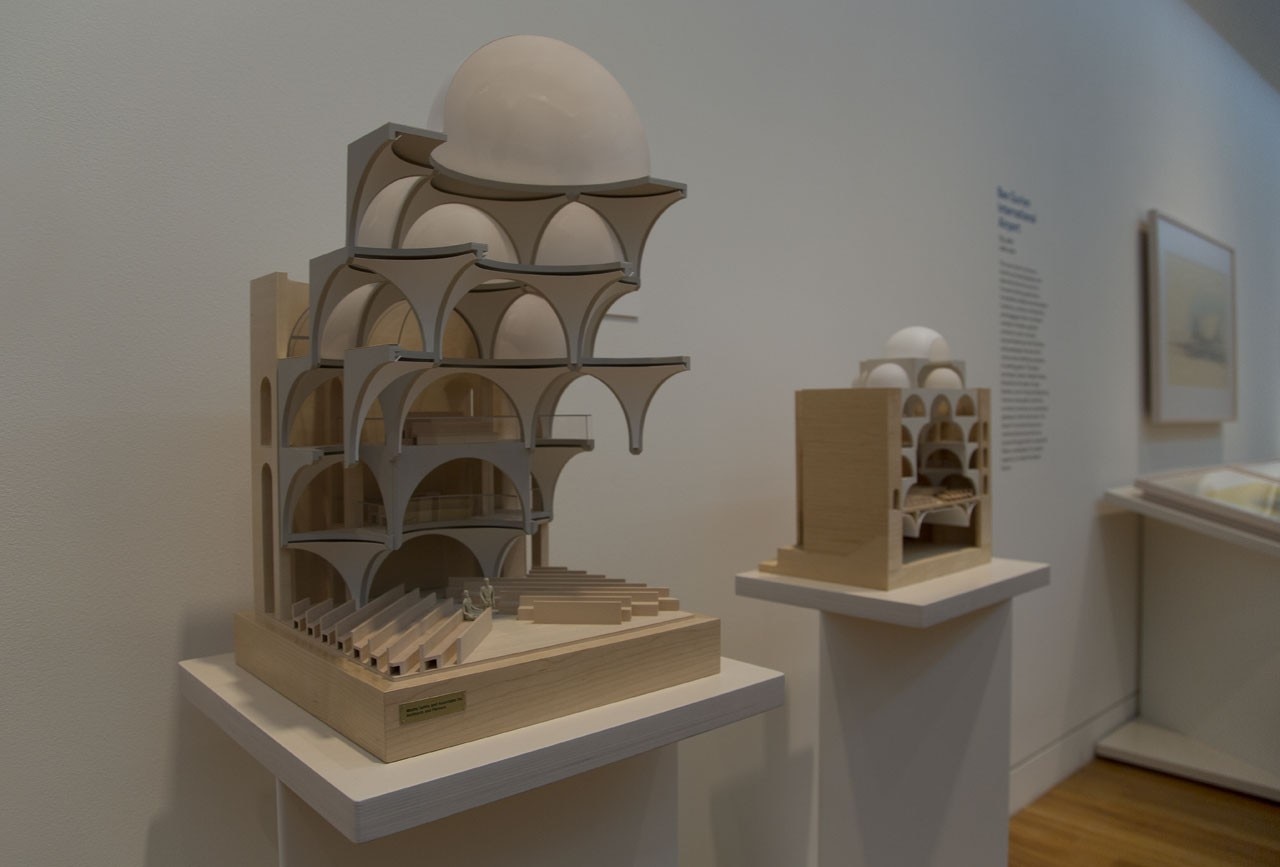
Domus: In other interviews, you’ve emphasized the necessary ‘rationality’ of architecture, and having to address constraints within a project. But a show like this allows architecture to be read like art, eliciting an emotional response. Is that the context of a museum talking or the actual works on display?
Moshe Safdie: No, I think emotion is built into the works. To say that I believe in the rationality of the design process and the fact that architects are accountable for many issues, is not to say that emotions and feelings are not a major part of architecture. When you design Yad Vashem, how can it not be about feelings? When you design a mosque, how can it not be about the sense of worship?
I just don’t think the rational and emotional are contradictory. Unfortunately when you use a word like functional, a word like rational, people say, ‘Oh, now you’ve reduced it all to logic.’ That’s not true. What I want to say is that you can’t have an architecture that’s all emotion, and doesn’t address the issues that are basic to its purpose. But without any emotions, the result is very cold and unsatisfying. This place we’re sitting in, now — the Skirball — I think it answers the purpose of its program and activities. It works well as a building: People come here and they find their way around. At the same time, it’s a very romantic, emotional place. People react to the building emotionally.
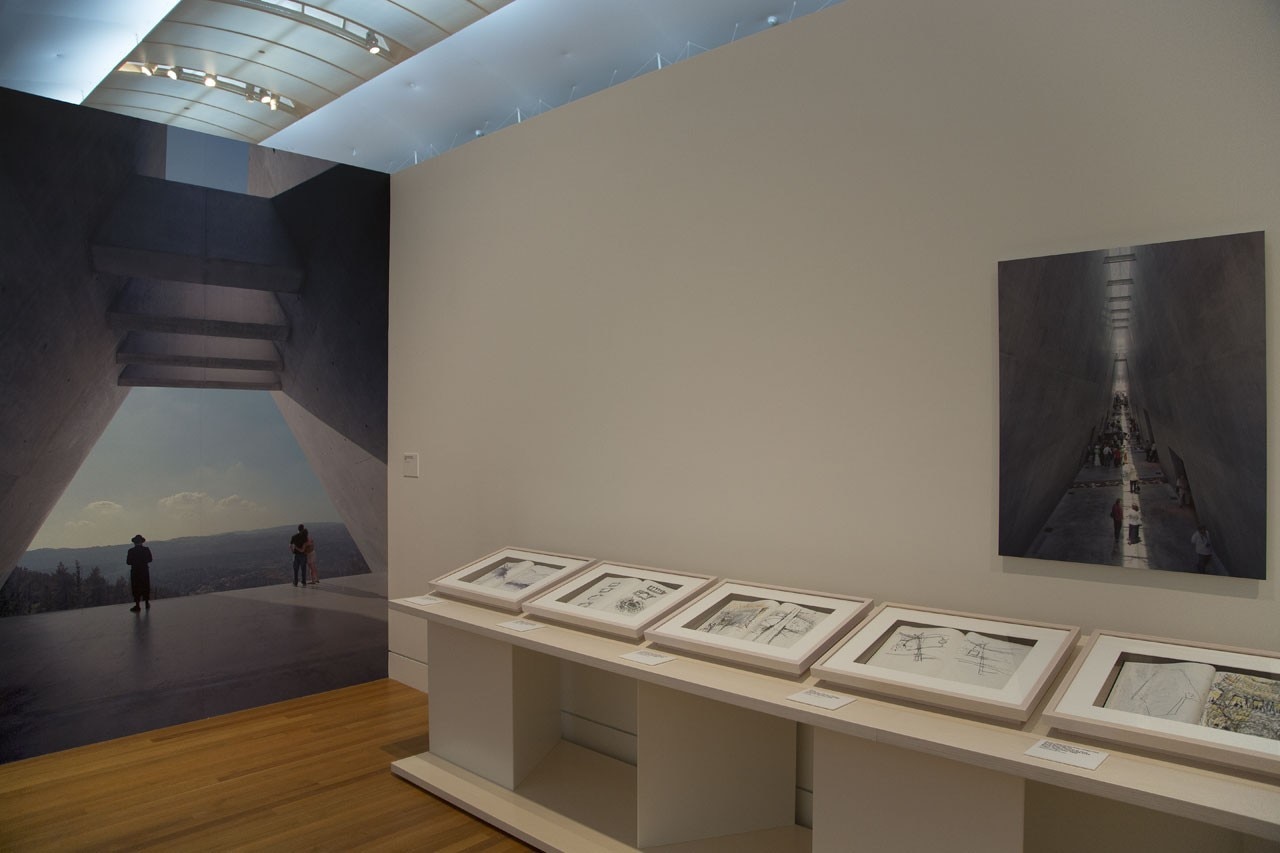
Domus: Since you use the word ‘romantic,’ I don’t think ‘drama’ has to be a bad word in architecture.
Moshe Safdie: I don’t either. In fact, sometimes I work very hard on the drama. I think buildings can be narratives in some cases; I like to allow them to tell the story.
Domus: Within your work, do consistent narratives unfold?
Moshe Safdie: The consistency is in certain themes that are present: The theme of light, air, nature, and integration with the landscape. I am always aware of dealing with scale in a human way, without overwhelming.
At the same time, work evolves, as I guess it does for many architects. You can see, for example, amazing evolution in Wright, from the Prairie house and Japanese buildings, to the Guggenheim, and the Johnson Wax. I suppose architects get preoccupied with new problems and new things develop from those preoccupations. When I start addressing new issues, they inform the work itself.
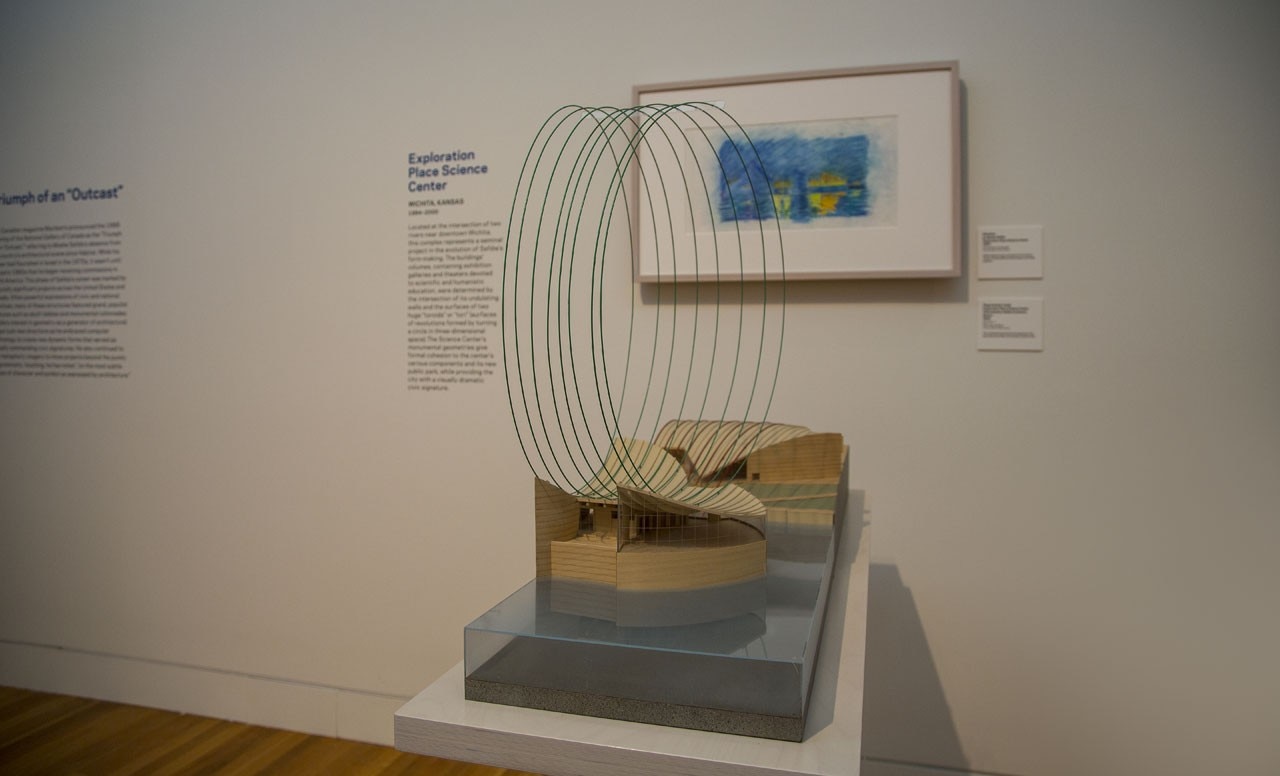
Domus: What kind of issues?
Moshe Safdie: The work in Asia is of a scale and a density that results in the kind of mixed-use cities that just didn’t exist before; not in my work and maybe not at all. I don’t think I could have conceived the Singapore Marina Bay Sands project 20 years ago, before I went to Asia and Singapore and China and Hong Kong, and seen this way of life.
Domus: I can’t help but bring up the title of this show: “Global Citizen”…
Moshe Safdie: That, of course, comes from the curator, Donald Albrecht. But he doesn’t explain ‘global’ just in terms of geography. When I’m asked about it, I reflect on what makes my work so much a part of place. First of all, my antennas are always out. I’m really curious about place. Whenever I arrive somewhere, whether it’s India or wherever it is, I come with a certain humility. Even though as a self-reflection, I think I can say that.
But most of all, I think an architect has to be a bit of a chameleon. What does a chameleon do? It reads the environment and changes its color. I think as an architect you read the environment and you allow it to affect your architecture. It’s a chameleon-like process.
Some people are very critical of that idea. I know that Bruno Zevi, who was a wonderful architect and critic that I knew many years ago, was very critical of my work in Jerusalem. He said: ‘Habitat is not romantic, your work in Jerusalem is romantic, you’re losing yourself, you’re giving in.’ He was very critical. I think he was wrong, but he didn’t share my kind of desire to make an architecture that belongs to a place.

Domus: Can I psychoanalyze for a moment? What you’re saying about an architect being a chameleon: Does it draw from your personal background, in which you moved and recalibrated according to your new countries of residence?
Moshe Safdie: Definitely I am informed by my early life experiences growing up in Israel — which is a very particular culture and political environment — and then being uprooted in my teen years and moving with my family to North America. That had a lot to do with my becoming aware of the differences between places. I was shocked when I landed in Montreal. It was such a different place from where I’d grown up. Then, of course, I started traveling a lot circumstantially. Certainly, I think if you’re an architect who’s spent all of life in Ohio without ever traveling, it’s something you might develop later, but I had it in me from the beginning.
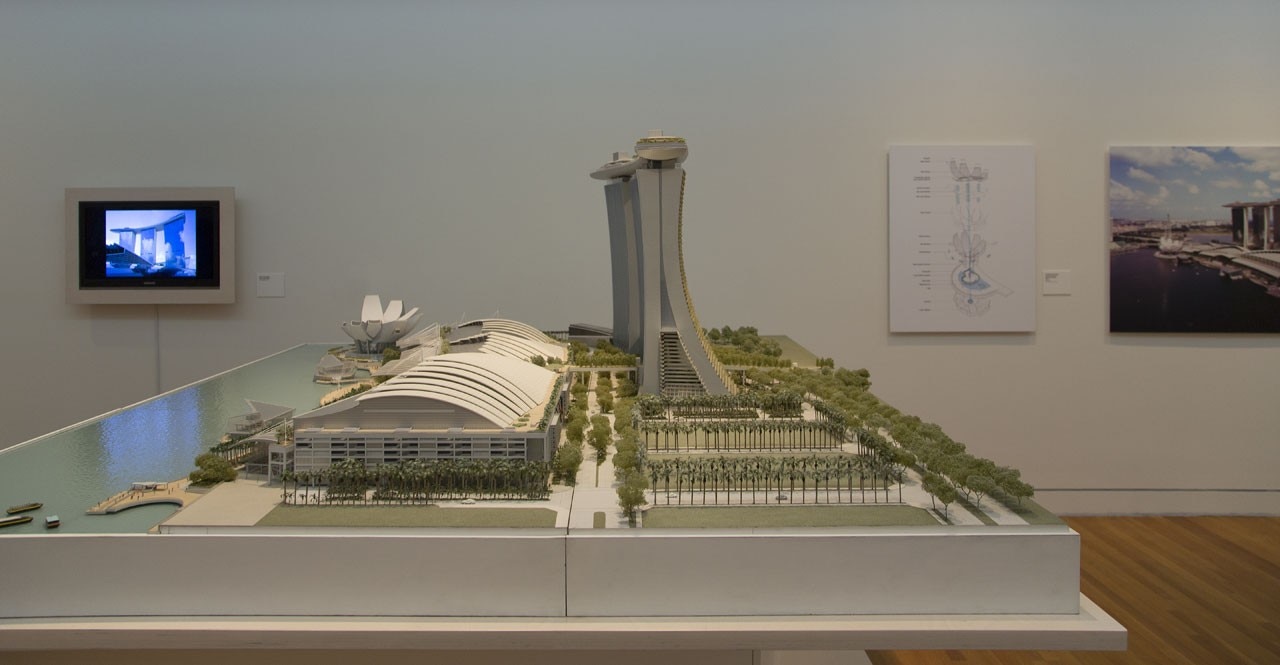
Domus: What is it exactly?
Moshe Safdie: That certain curiosity I mentioned. When you’re transplanted, one reaction is to feel curiosity and absorb a place. The other reaction is to say: ‘This is not familiar, I don’t want any part of it.’ I’m predisposed to exploring place. I have a hunger to enjoy different places and understand them.
Domus: Do you think it’s ever possible to look at a work of architecture and think of it as complete? Or do you always consider the possibly of change – in meaning, in aesthetic?
Moshe Safdie: I think buildings take on lives of their own, in the way they’re used and how people relate to them. They do change. Take Habitat: even its meaning changes. For one thing, it’s gentrified more than I ever thought it could. But I’ve seen articles about Habitat lately that talk about its formal iconic qualities, not things I talked about 50 years ago. Things come in and out of consideration. Buildings are transformed by the way they’re used, I’m sure of that.
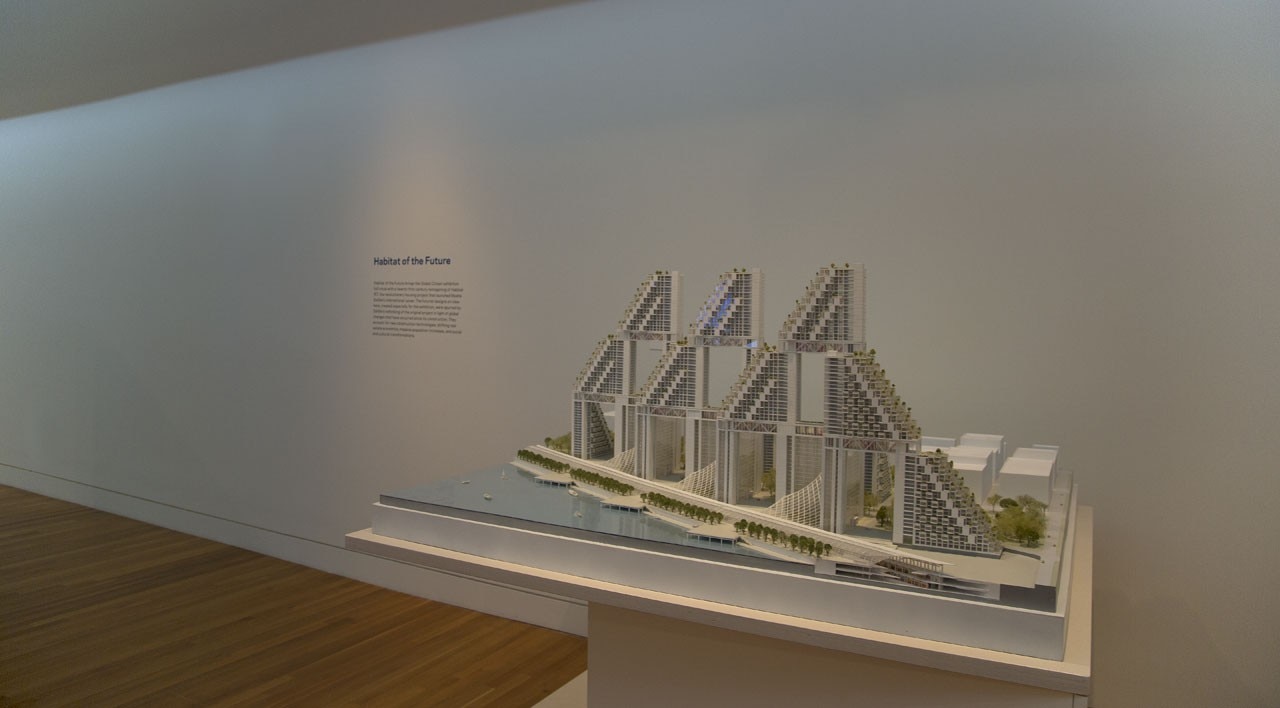
Domus: Do you agree with critics who say there’s a generational difference in architecture today, with young firms today being more political than their predecessors?
Moshe Safdie: I would say that my generation was by definition more political than anything we see today. Architects today address politics in the sense of ecology, the green planet, the environmental aspect of architecture. But in terms of economic policy, social policy? I don’t see that enough. I think of myself as excessively political in my upbringing. But I’m not alone. I think of my generation – by that, I mean architects who started working in the ’60s and ’70s – as very political. I think the Modern movement was political.
On the other hand, when I go to schools and meet with students, or work with the young people in my office, I don’t feel like they’re another generation than I am. The major difference between us is the tools we use. I still think and draw. I depend on the computer, but I don’t operate it. They think with the computer, not with the pencil. And that is a big difference in mode of operation. I wish students drew more, even though they have the computer.
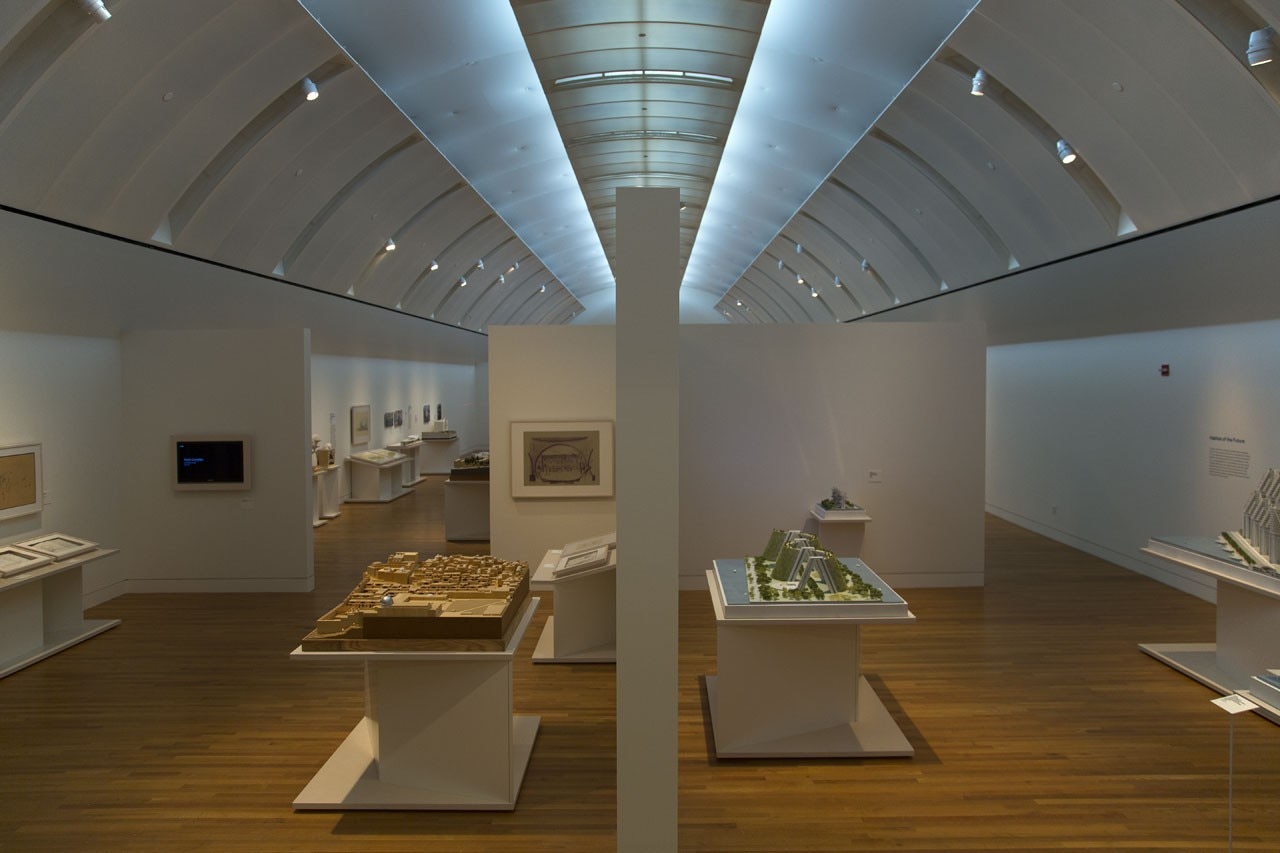
Domus: Would it result in a different architecture?
Moshe Safdie: When you design with a pencil and with color, you create something malleable. I work a lot in charcoal – I learned that one from Louis Kahn. Charcoal you can draw, rub, redraw, rub. It’s completely flexible. The computer is very stiff. You can do parametrics and start getting very tricky shapes. But for planning and organizing a building: very, very stiff. That informs the quality of the work. The tendency today is to conceive things and pass them on to the builders. Not my way.
Domus: That speaks to the two different stereotypes of the architect: architect in a tower, looking down; and architect with the hard hat on.
Moshe Safdie: I think the architect with the hard hat on is a designer builder. He works hand in hand with the craftsmen and the master builder. And then there’s the architect who’s like a composer, who creates a composition and then the conductors and the musicians in the orchestra are the ones who perform. It results in a different architecture. The architecture that’s conceived that way is not material. It’s not usually embedded in the process of construction. It tends to be more abstract and stage set because it’s not embedded in the processes.
Domus: Considering your huge body of work, how do you feel about the fact that the show begins and ends with Habitat?
Moshe Safdie: When I’m at Habitat, I feel almost as if somebody else designed it. It’s like history. It’s lived in. It’s 50 years old. I walk around the place and say: not bad for a 50-year-old lady. But elements of Habitat are still in everything I’m doing now. Even a Habitat of the Future draws on the original to take it further.
I used to be very irritated when people would describe me as, ‘best-known for Habitat.’ That’s stopped now: In Asia, I’m best known for Marina Bay. In Israel, I’m best known for Yad Vashem. But for many years, I really was best known for Habitat and while it used to irritate me, I don’t think that in one lifetime, you have the opportunity to make such a radical break more than once. I had an extraordinary opportunity, and it happened early in my life. These things don’t repeat so easily.
Until 2 March 2014
Global Citizen: The Architecture of Moshe Safdie
Skirball Cultural Centre
2701 N. Sepulveda Blvd., Los Angeles


